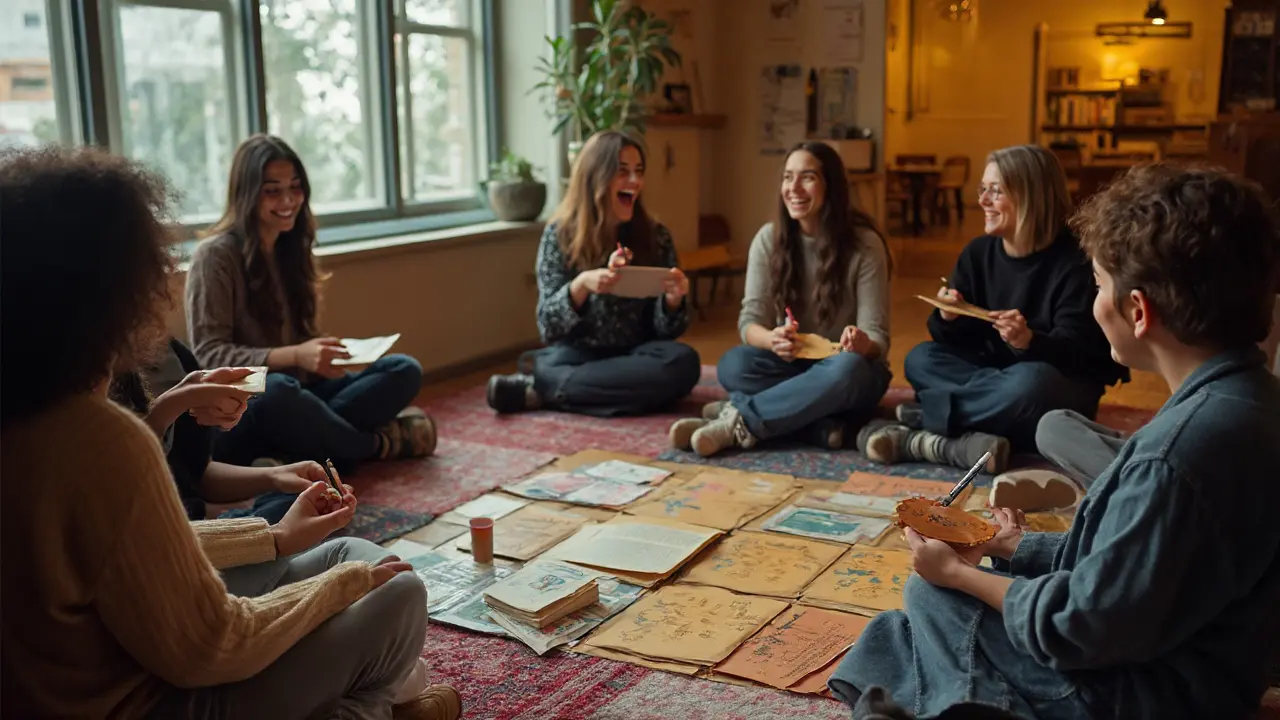Authoritarian movements always go after bodies first. They police sex, crush queer life, punish desire, and flood culture with shame. That is not random. If you control how people feel in their own skin, you weaken their ability to resist. So the fastest way to push back is not only protest and policy-it is pleasure. Not porn as a product, but the erotic as a lived power: feeling, connection, joy, and agency.
This isn’t abstract. In 1933, the Nazis burned Magnus Hirschfeld’s Institute for Sexual Science, one of the first clinics for queer and trans care. Franco’s Spain enforced strict sexual norms to control women’s lives. Modern strongmen still push pronatalist policies, censor sex education, and attack LGBTQ+ rights. Control desire, control people.
Here’s the practical punchline: when you rebuild erotic confidence-consent skills, body trust, honest communication-you make authoritarian scripts harder to run. People who feel grounded in their needs are tougher to scare and easier to organize. That scales from the bedroom to the ballot box.
Quick wins you can do this week:
• Run a two-minute daily body check-in: breathe slow, notice tension, unclench jaw, drop shoulders. Name one thing that feels good (warm mug, soft shirt, sunlight). Training attention to pleasure lowers stress and boosts agency.
• Practice a consent micro-script with a partner or friend: “I’m at a 6/10 for hugs today-short side hug okay?” Normalize asking, offering, and withdrawing without drama. Clear consent culture is antifascist culture.
• Audit your media diet: unfollow shame-bait accounts; follow at least three educators who teach consent, queer health, or sex-ed with evidence-based info. You’ll feel the tone shift in a week.
• Set one device-free hour for touch and play (solo or partnered): stretch, dance, massage, or read erotically charged poetry if that’s your lane. No goal, no performance-just curiosity.
What do we mean by “erotic”? Audre Lorde called it a source of power rooted in deep feeling. It’s the opposite of numbness. You know it when your body says yes: truth in your chest, breath that actually lands, skin that feels like yours again. That sense is hard to manipulate, which is exactly why it gets targeted.
A note on evidence: across multiple studies, higher disgust sensitivity tracks with stricter sexual norms and more authoritarian attitudes. That doesn’t mean pleasure makes you liberal; it means environments soaked in shame and fear push people toward rigid control. Training comfort with the body counters that.
If you organize events-book clubs, kink munches, community dinners-bake in safety upfront: clear codes of conduct, consent briefings, gender-inclusive language, opt-in photo policies, and trauma-informed volunteers. Safe spaces don’t kill spontaneity; they make it possible.
You don’t need to overhaul your life to start. Pick one ritual, one conversation, and one boundary this week. That’s how erotic power grows-small, repeatable, and yours.
- Why Authoritarians Police Pleasure
- The Erotic as Power, Not Product
- Building Consent-Centered Communities
- A Practical Pleasure Toolkit
Why Authoritarians Police Pleasure
Authoritarians don’t go after pleasure by accident. They do it because controlling bodies makes it easier to control speech, movement, family life, and money. If you can make people ashamed of their needs, you can make them obey.
The playbook shows up again and again: attack sex education, criminalize queer life, punish abortion and contraception, and reward “model” families while spying on everyone else. This locks people into fixed roles and keeps communities from organizing.
History is blunt about it. In May 1933, Nazis raided and destroyed Magnus Hirschfeld’s Institute for Sexual Science in Berlin and burned its library. Under Paragraph 175, the regime investigated roughly 100,000 men and convicted about 50,000 for homosexual acts. Franco’s Spain banned contraception and divorce, censored books and films, and used the Sección Femenina to enforce strict gender roles. In 1966, Romania’s Decree 770 outlawed most abortion and contraception; workplaces ran surprise gynecological checks, births spiked in 1967, and maternal deaths rose for years. Mussolini’s “Battle for Births” (from 1927) taxed bachelors and paid bonuses for large families, yet fertility never hit targets. Recent laws in Russia (the 2013 “gay propaganda” ban, expanded in 2022) and Hungary (2021 content restrictions) chilled LGBTQ organizing and education. Poland’s 2020 court ruling that led to a near‑total abortion ban has been tied to preventable deaths when doctors withheld care.
| Regime / Country | Years / Law | Policy Move | Main Target | Documented Outcome |
|---|---|---|---|---|
| Nazi Germany | 1933-1945; Paragraph 175 | Criminalized same-sex acts; shut Hirschfeld’s clinic; book burnings | Gay and trans communities | ~100,000 investigated; ~50,000 convictions; clinics destroyed |
| Francoist Spain | 1939-1975 | Banned contraception and divorce; censorship; moral policing | Women, queer people | Suppressed rights; arrests under morality laws; delayed access to reproductive care |
| Romania (Ceaușescu) | Decree 770 (1966) | Abortion/contraception bans; workplace pregnancy checks | Women | Birth rate nearly doubled in 1967; high maternal mortality; overcrowded orphanages |
| Italy (Mussolini) | 1927-1930s | “Battle for Births”; bachelor tax; family subsidies | All families | Fertility goals missed; increased state control of family life |
| Russia | 2013; expanded 2022 | “Gay propaganda” bans; fines; online blocks | LGBTQ people | NGO closures, events canceled, wider self‑censorship |
| Hungary | 2021 | Restrictions on LGBTQ content for minors; school controls | Educators, media | Chilled classrooms and publishers; legal fights with EU |
| Poland | 2020-2021 | Near‑total abortion ban via court ruling | Pregnant people | Reports of care delayed; documented deaths after doctors withheld treatment |
Why this works: shame and fear narrow attention. When you worry your desires make you “bad,” you avoid doctors, stay quiet at work, and stop meeting like‑minded people. That isolation lowers the cost of repression.
There’s also a psychological lever. A 2013 meta‑analysis by Terrizzi, Shook, and McDaniel found that higher disgust sensitivity relates to more authoritarian and punitive attitudes. Earlier work by Inbar, Pizarro, and Bloom linked disgust sensitivity to stricter sexual morals. If you crank up disgust in the culture, people lean toward control. If you build comfort with the body, the pull toward punishment weakens.
Public health data points the same way. A 2011 PLOS ONE study (Stanger‑Hall & Hall) showed U.S. states emphasizing abstinence‑only education had higher teen pregnancy and birth rates than states teaching comprehensive sex ed. Censoring information doesn’t make risk go away; it makes bad outcomes more likely, which then “justifies” more crackdowns. That spiral is useful to authoritarians.
There’s an economic angle too. When the state ties benefits to family size, marriage status, or “morality,” it nudges people into surveillance. Inspections, registries, and loyalty tests creep in through clinics, schools, and welfare offices. Private life becomes admin data.
How to spot the early warnings in your own backyard:
- Sex‑ed bills that ban words like “gender,” “consent,” or “contraception,” or require parental opt‑ins designed to scare teachers.
- Book bans that target puberty guides, queer memoirs, and basic health resources, not just explicit content.
- “Obscenity” or “decency” laws revived to police art exhibits, drag shows, and health clinics.
- Pronatalist perks tied to monitoring (mandatory counseling, fertility registries, workplace pregnancy checks).
- Criminalizing or chilling gender‑affirming care and contraception rather than funding informed care.
- Platforms throttling sexual health educators while allowing harassment to spread.
All this circles back to erotic power-not porn as a product, but your capacity to feel, choose, and connect. That’s what gets targeted because it strengthens agency. The more people trust their own signals, the harder they are to herd.
Practical takeaway: push for comprehensive sex ed with consent skills, defend libraries and clinics, and track “moral” bills that smuggle in surveillance. When pleasure is informed, shame loses its grip-and so does authoritarian control.
The Erotic as Power, Not Product
Audre Lorde drew the line clearly in her 1978 essay “Uses of the Erotic.” The erotic is not porn or performance. It’s inner fuel-the felt sense of aliveness that helps you choose, set limits, and act. Porn is a product; the erotic is a practice. That shift matters, because it moves us from consuming to creating agency.
Platforms train us to perform: chase clicks, keep pace with trends, buy more to feel more. That’s product logic. Power logic is different: slow down, sense more, choose on purpose. When you build erotic power, you get better at noticing what’s true in your body and making choices that match it. That skill doesn’t depend on looks, age, or a follower count.
There’s solid science behind this. Neuroscientists Hugo Critchley and Sarah Garfinkel describe interoception-the sense of internal body signals-as a foundation for emotional awareness and self-regulation (Nature Reviews Neuroscience, 2017). When you feel your breath, heartbeat, and tension patterns more clearly, you make steadier decisions and are harder to push around. Touch helps too. Reviews by Tiffany Field show supportive touch can reduce stress markers and improve mood (Developmental Review, 2010). These aren’t magic tricks; they’re body skills you can train.
Here’s how to build power without buying more stuff.
- Switch from performance to sensation. If you notice you’re “doing it right” for an imagined camera, pause. Take three slow breaths. Ask, “What exact part of this feels good right now?” Adjust to increase that one cue-pressure, pace, location. Sensation first, looks second.
- Use a 5-minute interoception drill. Set a timer. 1 minute on breath, 1 on heartbeat (or pulse at your wrist), 1 scanning jaw/shoulders/belly, 1 on temperature/texture where your body meets a surface, 1 on any pleasant micro-feel you can find. This builds the “signal” that choices can follow.
- Practice consent micro-scripts. Try: “I’d like X. How does that land for you?” and “Yes, but only Y minutes,” and “Not now; check again later.” Say them with a neutral tone. Power grows when your “yes” and “no” are simple and reusable.
- Play with Sensate Focus (Masters & Johnson). For two sessions, no goal other than noticing touch. Session 1: clothed, non-genital, five minutes each way. Session 2: same rules, increase time. Report back one concrete sensation (“warmth on shoulder,” “tingle in scalp”). This reduces pressure and increases awareness.
- Map your desire style. Many people don’t feel spontaneous desire; they have responsive desire (Rosemary Basson’s model, 2001). Translation: you may need comfort and a little warm‑up before interest kicks in. Remove the shame, adjust the plan.
- Run a boundaries lab. Make three lists: Green (clear yes), Yellow (context-dependent), Red (hard no). Share them with a partner or keep them for yourself. Revisit monthly. Boundaries that are written get used.
“Ethical consumption” helps, but it’s not the core. You can choose creators who show clear consent, safer-sex practices, and aftercare notes. You can pay independent workers directly on platforms like OnlyFans (launched 2016) where creators set terms. But remember: the feed is a product. Your body is the power plant. If consumption crowds out your own sensing and relating, scale back and return to practice.
Common traps to avoid:
- Mistaking novelty for depth. New positions or toys can be fun, but they won’t fix disconnection. If you’re numb or checked out, go back to breath, pressure, pacing, and honest asks.
- Outsourcing arousal to the screen. If you can’t get aroused without a device, run a two-week reset: limit visual stimuli, emphasize touch and fantasy you generate yourself, and add daily interoception drills.
- Skipping aftercare. Intense scenes-sexual or not-need downshifting. Try 10 minutes of quiet, water, light snack, and a feelings check. This cements safety and keeps power steady.
- Ignoring trauma signals. Flashbacks, numbness, or panic mean slow down. Shorten sessions, keep lights on, use words more. Consider trauma-informed therapy; the book “The Body Keeps the Score” (van der Kolk, 2014) summarizes why the body holds stress.
Want a quick power audit? Ask weekly: Did I notice my body’s “no” early? Did I voice at least one want? Did I recover well after intensity? If you’re trending yes, you’re building real capacity. That spreads. People who can sense, choose, and repair are harder to scare and easier to organize-and that’s the point.
Further reading: Audre Lorde’s “Uses of the Erotic” (1978); Masters & Johnson’s sensate focus protocols (1960s-70s); Critchley & Garfinkel on interoception (2017); Tiffany Field’s touch research (2010); Basson’s sexual response model (2001). Use them as tools, not scripts. The win is simple: more feeling, clearer choices, less shame.

Building Consent-Centered Communities
Consent isn’t a niche “sex talk.” It’s the operating system for trust. When a community makes consent normal-asking first, listening, honoring no-people feel safer, more connected, and more willing to show up. That safety fuels creativity, mutual aid, and yes, pleasure. Consent culture grows erotic power because it returns choice to the body and keeps coercion out of the room.
Start with plain definitions. Affirmative consent means a clear, freely given yes that’s specific, informed, and reversible. No response is not a yes. Intoxication wipes out valid consent. California codified this on public college campuses with SB-967 back in 2014, often called “Yes Means Yes.” New York followed with its “Enough Is Enough” standard in 2015. These laws aren’t perfect, but they set a floor: consent must be active, not assumed.
Why build all this into community life? Because the risk is real, not theoretical. The World Health Organization estimates about 1 in 3 women globally have experienced physical and/or sexual violence in their lifetime. In the U.S., CDC’s NISVS has reported roughly 1 in 5 women experience attempted or completed rape. Those numbers drop when communities invest in prevention, education, and bystander skills.
| Topic | Key fact | Why it matters | Source |
|---|---|---|---|
| Global prevalence | ~1 in 3 women experience physical/sexual violence in their lifetime | Sets the baseline for why consent systems are needed everywhere | WHO, 2021 |
| U.S. prevalence | ~1 in 5 women have experienced attempted or completed rape | Highlights scope for U.S.-based groups and campuses | CDC NISVS |
| Affirmative consent policy | CA SB-967 (2014) requires “Yes Means Yes” on state-funded campuses | Model language for community codes and event policies | California Legislature |
| Bystander training | Green Dot reduced sexual violence in a Kentucky high-school RCT | Evidence that training changes outcomes, not just attitudes | Coker et al., AJPM, 2017 |
| Sex education | Comprehensive sexuality education improves knowledge and protective behaviors | Supports consent education for teens and adults | UNESCO Technical Guidance, 2018 |
Here’s a practical blueprint you can copy-paste into your club, festival, studio, or Discord. It’s split into before, during, and after.
Before the event: put consent in the infrastructure
- Write a plain-language Code of Conduct. Keep it under 600 words. Include: scope (applies online/offline), examples of unacceptable behavior (harassment, non-consensual touch, slurs), how to report, what actions organizers may take, and a guarantee of anti-retaliation. The Geek Feminism anti-harassment template is a solid starting point used by many conferences.
- Post consent norms everywhere: website, tickets, emails, door signage. Use clear verbs: “Ask first,” “Name your boundaries,” “No photos without permission,” “Yes is reversible.”
- Create multiple reporting channels: a staffed phone/text line, a QR code to a simple web form, and an in-person safety point. Not everyone wants to talk; not everyone wants to type.
- Pick and train a safety team. Minimum two people per 100 attendees. Train them on trauma-informed responses, bystander skills (the 4Ds: Direct, Distract, Delegate, Delay), and how to document incidents neutrally (who/what/when/where) without investigating on the spot.
- Design name badges and space cues for consent: pronoun stickers; opt-in photo markers (green = okay, red = no photos); color-coded lanyards for touch preferences if appropriate.
- Accessibility is consent. Provide step-free routes, seating, quiet space, gender-inclusive restrooms, and clear signage. Spell out what you offer in the event page.
During the event: normalize consent out loud
- Run a 60-second consent briefing at the start of each track or class: “Ask before you touch. A yes can change to a no anytime. If you need help, text this number or find a badge with ‘Safety’. No photos without a sticker.” Short beats perfect.
- Model the behavior. Hosts can say, “Would you like a hug or a wave?” People copy what they hear.
- Make checking in easy: place visible “quiet corners,” water stations, and a staffed help desk. If people can step away, they can regulate and return.
- Respond fast and light. If someone reports harm, separate parties, provide options (medical, leave, stay with a buddy, contact authorities if they want), record facts, and enforce the code-up to removal. Document, don’t debate.
After the event: close the loop
- Send a short follow-up form asking three things: did you feel safe; did staff help; any suggestions. Keep it anonymous by default.
- Publish a brief transparency note quarterly: number of reports (no identifying details), actions taken, and improvements planned. Sunlight builds trust.
- Update training and policies based on feedback. Retire what didn’t work; double down on what did.
Consent scripts you can teach in five minutes
- Ask: “I’d like to put my hand on your shoulder-okay?” Pause. Wait for an answer.
- Check-in: “Still good to keep going?”
- Decline: “No thanks, not today.” No need to explain.
- Change course: “I’m a no now. Let’s switch to talking.”
If your group wants more depth, borrow from programs with peer-reviewed backing. Green Dot (bystander training) and Bringing in the Bystander have both shown improvements in bystander behaviors and reductions in harmful attitudes in controlled studies. For youth spaces, UNESCO’s comprehensive sexuality education framework gives age-appropriate modules that cover consent, communication, and rights.
Moderating online spaces with consent in mind
- Clear rules on DMs: no cold sexual messages; ask before moving chat off-platform.
- Photo and doxxing policy: post only with permission; ban sharing private info. Fast takedown channel for images and personal data.
- Content warnings for graphic topics; opt-in channels for adult themes; age gates where required by law.
- Moderator playbook: stock responses, escalation ladder (warn → mute → kick → ban), and a log for patterns.
Data handling and privacy
- Collect the minimum needed to act on a report. Store incident logs in an access-limited folder, encrypted if possible.
- Set a retention period (e.g., 12 months) and state it in your policy.
- Never publish names without consent or legal necessity. Removing harm doesn’t require public shaming.
Metrics that keep you honest
- Response time: median minutes from report to first staff contact.
- Staff coverage: safety staff per 100 attendees per hour.
- Awareness: % of attendees who recall two consent rules in the post-survey.
- Follow-through: % of reports that received documented action within 24 hours.
Common pitfalls? Overcomplicated policies no one reads, safety teams without authority to act, and silent norms that assume “everyone knows.” Keep it simple, repeat it often, and empower the people tasked with enforcement.
The win here isn’t just fewer problems. It’s a community where people can explore, play, and connect without second-guessing their safety. That’s the kind of place where people show up, bring friends, and build the social muscle that authoritarianism hates-mutual care backed by real choices.
A Practical Pleasure Toolkit
This toolkit is about building erotic power-practical skills you can train, alone or with others, to grow agency, calm, and connection. The goal is simple: less shame, clearer consent, more choice. Nothing here requires special gear or a perfect relationship. You can start today.
“The erotic is a measure between the beginnings of our sense of self and the chaos of our strongest feelings.” - Audre Lorde, Uses of the Erotic (1978)
1) Regulate first: breath, body, and pace
Your nervous system sets the floor for pleasure. When stress is high, inhibition goes up and curiosity shrinks. The Dual Control Model (Bancroft & Janssen, 2000) shows sexual response is a balance of excitation and inhibition; anxiety reliably pushes the brakes. The fix is not hype-it’s regulation.
Two-minute body check-in: unclench jaw, drop shoulders, relax belly. Name one neutral-to-good sensation (warmth of a mug, weight of a blanket). This builds interoception, the skill of noticing body signals.
Coherent breathing: inhale 4-5 seconds, exhale 5-6 seconds, for 3-5 minutes. Reviews in Frontiers in Psychology (Lehrer & Gevirtz, 2014) show breathing around six breaths per minute can raise heart rate variability (HRV), a marker tied to stress resilience.
Set pace before play: “Let’s go slow and check in after 10 minutes.” Pre-setting a review point lowers pressure and makes stopping normal instead of awkward.
2) Consent you can use under stress
Consent works best when it’s simple, repeatable, and specific. Planned Parenthood’s FRIES model is a clean checklist: Freely given, Reversible, Informed, Enthusiastic, Specific.
Micro-scripts to memorize: “I’m at a 6/10 for cuddling-short side hug okay?” “I’m curious about X, not Y. Check back in five minutes?” “No for tonight, maybe next week.” Short, clear, and kind.
Traffic-light check-ins: green (good), yellow (slow/adjust), red (stop). Agree on words or signals before you start. It’s common in kink communities because it works under pressure.
Yes/No/Maybe lists: fill one out solo, then compare. Scarleteen and other sex-ed orgs publish free templates. Update quarterly; people change.
Sober consent rule: heavy intoxication breaks good consent. If alcohol or drugs are in play, downshift to lower-stakes touch or wait. This keeps trust intact.
3) Touch without performance: Sensate Focus basics
Masters and Johnson created Sensate Focus in the 1960s to reduce anxiety and boost awareness. It’s used by modern sex therapists because it takes the goal pressure off and brings sensation back online.
Phase 1 (two weeks): 10 minutes each, taking turns giving and receiving gentle, non-goal-directed touch over agreed-on areas. No pressure to escalate. Talk afterward, not during, except to guide: “Softer,” “Slower,” “Stop.”
Phase 2: keep the same style, add more regions only if both want to. Still no pressure to perform or “finish.”
Debrief: each person shares one thing that worked and one tweak for next time. Keep it specific and brief.
Why it helps: specialized nerve fibers (C‑tactile afferents) respond best to slow, gentle stroking around 3-5 cm/s and often map to higher pleasantness ratings (McGlone et al., 2014). Slow is not a vibe-it’s neurobiology.
4) Environment and tools that reduce friction
Room setup: phones out of reach, soft lighting, comfortable temperature, water nearby. Reducing small annoyances frees attention.
Lubrication 101: water-based works with condoms and most silicone toys; silicone-based lasts longer but can degrade some silicone toys; oil-based breaks latex. If there’s pain, add lube first, then slow down, then reconsider the activity.
Pain is a stop sign, not a challenge. Pelvic pain is often from overactive (tight) muscles, not weak ones. Pelvic floor physical therapists treat this; ask your clinician for a referral.
Medication check: SSRIs can dampen desire or delay orgasm; antihistamines dry mucous membranes; some hormonal methods can shift libido. Don’t quit meds-ask a clinician about timing, dose changes, or adjuncts.
5) Scripts that lower awkwardness
Start: “I want closeness tonight. Here are two options that feel good: a bath together or a 15‑minute massage. Do either sound good?”
Boundary: “I’m a no to X, but a yes to Y and Z.”
Stop: “Pause. I need water and a reset.”
Repair: “I shut down earlier. You didn’t do anything wrong; I hit a limit. Can we try again slower tomorrow?”
6) Community safety that feels natural
If you host meetups-book clubs, dance nights, munches-bake safety into the structure so it doesn’t rely on courage in the moment.
Code of conduct in plain language. Example pillars: consent, confidentiality, no harassment, photo policy = opt-in only, contact info for organizers.
Consent briefing at the start: 90 seconds on asking, checking in, and accepting “no.” Doing this every time normalizes it.
Buddy system: new folks can opt into a check-in buddy for the first hour. It lowers social risk.
Accessibility: chairs, quiet room, pronoun stickers offered not forced, gender-inclusive bathrooms. Small changes, big impact.
7) Digital privacy for intimate spaces
Use platforms with end-to-end encryption for sensitive chats (e.g., Signal). Turn off cloud backups for those threads to prevent silent copies.
Strip metadata from photos and disable location services for camera apps. No screenshots without consent-say it out loud.
Separate identities if needed: different email handle, no real names in groups, and distinct avatars. Safety beats convenience.
8) Measure progress, not perfection
Weekly 10-minute review (solo or with a partner): What felt good? What felt “meh”? What boundary did I hold? What do I want to try?
Track simple markers: sleep quality, stress level (0-10), desire (0-10), and connection after time together (0-10). If numbers drop for weeks, simplify and slow down.
Set a “pleasure budget”: two 15-minute blocks this week for curiosity-reading, touch practice, movement, or guided body scan.
9) When to bring in pros
If panic, pain, or trauma responses keep showing up, get specialized help. Look for AASECT-certified sex therapists or pelvic floor physical therapists. For trauma, SAMHSA’s guidance on trauma-informed care (2014) is the standard: safety, choice, collaboration, trust, empowerment. Good help feels like more control in your hands, not less.
10) Quick references you can trust
Audre Lorde’s essay “Uses of the Erotic” for the political and personal frame.
Planned Parenthood for plain-language consent education (FRIES).
Frontiers in Psychology (HRV and breath) and Kinsey Institute work on the Dual Control Model for the science side.
Start with one skill from this list and repeat it for a week. Then stack another. Pleasure is a practice, and practice makes it durable under pressure.




